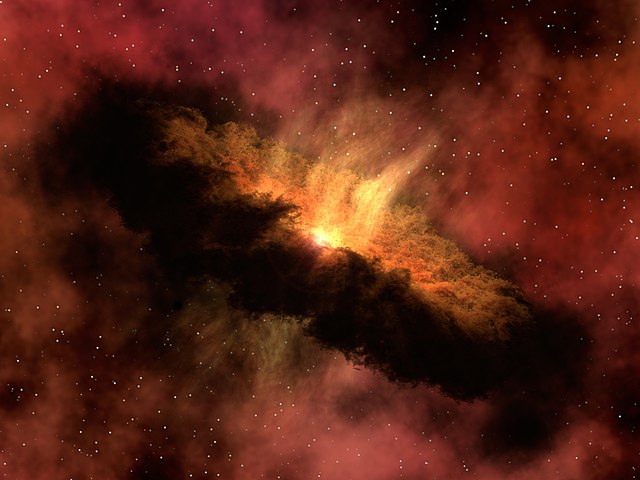Nebular hypothesis
Videos
Page
The nebular hypothesis is the most widely accepted model in the field of cosmogony to explain the formation and evolution of the Solar System. It suggests the Solar System is formed from gas and dust orbiting the Sun which clumped up together to form the planets. The theory was developed by Immanuel Kant and published in his Universal Natural History and Theory of the Heavens (1755) and then modified in 1796 by Pierre Laplace. Originally applied to the Solar System, the process of planetary system formation is now thought to be at work throughout the universe. The widely accepted modern variant of the nebular theory is the solar nebular disk model (SNDM) or solar nebular model. It offered explanations for a variety of properties of the Solar System, including the nearly circular and coplanar orbits of the planets, and their motion in the same direction as the Sun's rotation. Some elements of the original nebular theory are echoed in modern theories of planetary formation, but most elements have been superseded.

Dusty disks surrounding nearby young stars in greater detail.

The visible-light (left) and infrared (right) views of the Trifid Nebula—a giant star-forming cloud of gas and dust located 5,400 light-years away in the constellation Sagittarius

Infrared image of the molecular outflow from an otherwise hidden newborn star HH 46/47

Debris disks detected in HST archival images of young stars, HD 141943 and HD 191089, using improved imaging processes (24 April 2014).
Formation and evolution of the Solar System
Videos
Page
There is evidence that the formation of the Solar System began about 4.6 billion years ago with the gravitational collapse of a small part of a giant molecular cloud. Most of the collapsing mass collected in the center, forming the Sun, while the rest flattened into a protoplanetary disk out of which the planets, moons, asteroids, and other small Solar System bodies formed.

Artist's conception of a protoplanetary disk

Pierre-Simon Laplace, one of the originators of the nebular hypothesis

Hubble image of protoplanetary discs in the Orion Nebula, a light-years-wide stellar nursery probably very similar to the primordial nebula from which the Sun formed

Meteor Crater in Arizona. Created 50,000 years ago by an impactor about 50 metres (160 ft) across, it shows that the accretion of the Solar System is not over.